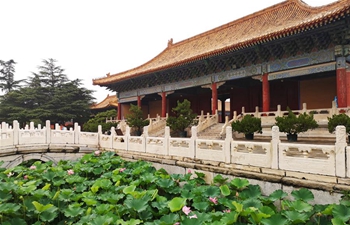SYDNEY, July 23 (Xinhua) -- Australian scientists have mapped the genetic structure of the influenza virus, presenting opportunities for understanding and coping with future pandemics.
The team from the University of Melbourne, led by Lorena Brown, revealed on Tuesday how the eight segments of the influenza A genome lock together, the mechanism by which new flu viruses form.
"Pandemic viruses are usually created by reassortment," Brown told Xinhua. "Often influenza viruses from birds will swap genes with influenza viruses from humans."
"If the resulting virus has new surface antigens that humans have never seen before they will not have any antibodies to the virus."
By understanding the way that the segments link together in different virus strains, scientists now have a better idea of whether particular segments of one virus are compatible with the segments of another virus.
"This tells us whether particular gene constellations are likely or unlikely to form in nature as a result of gene swapping (reassortment)," Brown explained.
While the team cannot predict when a pandemic will occur, the research helps to assess which pandemic viruses are most likely to arise.
"We cannot pre-empt a pandemic but our work will lead to us being able to predict what pandemic viruses could arise and what genes they might carry, which in turn affects the severity of the infection the virus causes," Brown said.
"This will allow us to be better prepared for the next pandemic."













